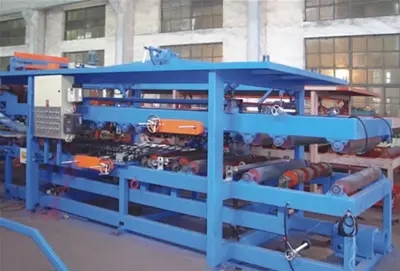Understanding Carbon Steel ERW Tube Mills
Carbon steel Electric Resistance Welded (ERW) tube mills are crucial in the manufacturing of steel tubes and pipes. These mills play a significant role across various industries, including construction, automotive, oil and gas, and more. Understanding the working principles, advantages, and applications of carbon steel ERW tube mills can provide valuable insights into their significance in modern manufacturing.
What is ERW?
ERW stands for Electric Resistance Welding, a process where steel strips or sheets are formed into tubular shapes and welded together using electrical resistance. The process involves passing an electric current through the edges of the steel strip, generating heat due to resistance, and causing the edges to fuse together. This method is highly efficient and is widely used for producing tubes with a consistent diameter and wall thickness.
The Process of Manufacturing with ERW Tube Mills
The operation of a carbon steel ERW tube mill involves several stages
1. Material Preparation It starts with the selection of high-quality carbon steel strips. The strips are often pre-treated to remove impurities and improve surface quality.
2. Forming The flat strips are then fed into the mill, where they are shaped into a tube using a series of rollers. These rollers progressively bend the strip until its edges meet.
3. Welding As the formed strip moves through the welding section, high-frequency current is applied, welding the edges together. This process ensures a strong bond without the need for filler materials.
4. Cooling After welding, the newly formed tube is cooled to stabilize its shape and enhance its mechanical properties.
5. Finishing The tube undergoes various finishing processes, including cutting to length, inspecting for defects, and possibly additional treatments like galvanization for corrosion resistance.
Advantages of Carbon Steel ERW Tube Mills
There are several advantages to using carbon steel ERW tube mills
carbon steel erw tube mill
- Cost-Effectiveness ERW tubes tend to be more affordable than seamless tubes, making them a popular choice for applications where cost is a significant factor.
- Strength and Durability The welding process used in ERW production provides excellent strength and uniformity, which are essential properties for structural applications.
- Versatility ERW tube mills can produce a wide range of tube sizes and wall thicknesses, catering to various industry needs.
- Environmentally Friendly The ERW process is efficient and generates less waste compared to other methods, contributing to eco-friendly manufacturing practices.
Applications of Carbon Steel ERW Tubes
Carbon steel ERW tubes are utilized in numerous sectors
- Construction They are widely used for structural applications, scaffolding, and framing, where strength and load-bearing capacity are crucial.
- Automotive In the automotive industry, they are used in manufacturing chassis and other components due to their durability and lightweight properties.
- Oil and Gas ERW tubes are essential for pipelines transporting oil and gas, providing the necessary strength and resistance to pressure.
- Furniture and Appliances They also find applications in manufacturing furniture and various household appliances, enhancing design and functionality.
Conclusion
In conclusion, carbon steel ERW tube mills serve as a cornerstone of modern manufacturing, providing high-quality, cost-effective solutions for a multitude of applications. As industries continue to evolve, the significance of these mills will likely grow, making them indispensable in meeting the demands of a dynamic market. Understanding their operation and benefits can help businesses make informed decisions regarding their material needs and production strategies.







